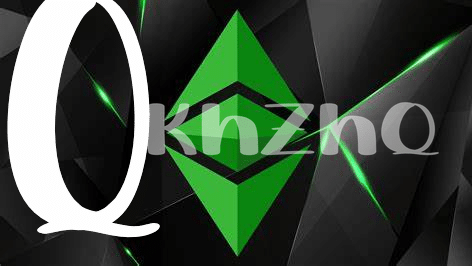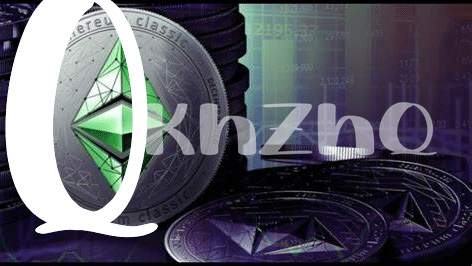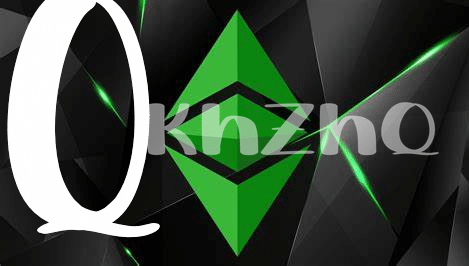The Birth Story of Two Blockchains 🍼

Imagine two twins who share the same roots but end up walking different paths as they grow. This tale isn’t about people, but about two digital worlds – Ethereum and Ethereum Classic. Their story begins in a unified cradle, a single blockchain born from innovative code and big dreams. But, like many stories of divergence, a pivotal moment came that set them on separate paths. This moment was known as “The DAO” incident in 2016, a hack that shook their shared foundation. The community was divided on how to respond. One group chose to erase the theft from history through a hard fork, creating what we know today as Ethereum. The other camp believed in the immutability of the blockchain, deciding to accept the incident and move forward without altering the past, thus continuing the original chain as Ethereum Classic. This decision didn’t just represent a technical fork; it symbolized a philosophical divide about what the future of blockchain should look like. Despite sharing the same genesis block, the two now journey forward with distinct identities, supported by their unique communities and visions, highlighting the spectrum of belief in what decentralized technology should stand for.
| Feature | Ethereum | Ethereum Classic |
|---|---|---|
| Birth Year | 2015 (Fork in 2016) | 2015 |
| Fork Decision | Implemented a hard fork to reverse the DAO hack | Chose to maintain the original blockchain, accepting the consequences of the hack |
| Philosophy | Flexibility and adaptability for the sake of security and consensus | Immutability and original vision of the blockchain |
Breaking down the Tech: What Sets Them Apart 🔧
In the world of digital currencies, Ethereum and Ethereum Classic are like siblings who chose very different paths. Imagine two houses built with the same blueprint, but over time, one gets an upgrade with solar panels, a smart security system, and even an addition for more room. That’s Ethereum, constantly updating and adapting. On the other hand, Ethereum Classic is like preserving the original house, valuing the old ways and sticking to the original plan despite the new technologies around. The key difference lies in their technology and vision for the future. After a significant disagreement in the community, Ethereum decided to make a big change, a fork, to undo a major hacking event. Ethereum Classic, however, chose to accept what happened and move forward without changing its history.
This divergence isn’t just philosophical; it’s built into the tech powering each blockchain. Ethereum embraced a new model called proof of stake, which is a bit like deciding who gets to add the next block to the chain based on how much they’re willing to ‘stake’ or lock up, their own ether as a form of security deposit. It’s akin to earning the right to be a contributing member of a club by proving you’re invested in its success. Ethereum Classic, however, sticks with proof of work, where solving complex puzzles proves your worth. This fundamental difference affects everything from how transactions are processed to how new tokens are created. Besides, for those looking into the nitty-gritty of the blockchain and crypto world, checking out topics like how USDT maintains its value can be enlightening. You can find more on this at https://wikicrypto.news/how-usdt-maintains-its-peg-the-mechanics-explained, which delves deeper into the mechanics behind the scenes.
Following the Money: Ethereum Vs Ethereum Classic 💰

When it comes to investing, both Ethereum and its sibling Ethereum Classic offer intriguing opportunities, but their financial landscapes look quite different. Ethereum, often seen as the newer, more polished version, has attracted a significant amount of investment and support from both individual enthusiasts and large companies. This is partly because it’s seen as more innovative, with its ongoing updates and ability to support complex applications. As a result, its value has climbed, making it a heavyweight in the cryptocurrency world. 📈 On the other hand, Ethereum Classic maintains the original blockchain’s integrity, appealing to purists who value the unaltered history of the technology. Despite this, its market position is considerably smaller compared to Ethereum, making it a quieter, albeit loyal, market player. 💼
The difference in financial backing reflects not just in their market value but also in their development and growth prospects. Ethereum’s ability to evolve and adapt has made it a darling for developers looking to build new apps and services, securing its financial growth and investment infusion. Ethereum Classic, while still significant, operates on a more modest scale, with a focused community that supports its development but lacks the large-scale financial injections Ethereum enjoys. This contrast paints a vivid picture of two paths diverged from a common beginning, each finding its own way in the digital currency space. 🚀
The Tight Race of Security Measures 🛡️

Imagine two siblings growing up together but choosing different paths as they mature. That’s the story of Ethereum and Ethereum Classic, especially when it comes to keeping their digital neighborhoods safe. Think of security measures as the fences and security systems they install around their houses. Both blockchains are in a continuous race to build higher fences and more sophisticated security systems to protect their residents—those pieces of code and digital assets living on them. Ethereum moves forward with a security protocol that’s like adding facial recognition and motion sensors to their system. Ethereum Classic, on the other hand, prefers a more traditional approach, akin to having a solid, tried-and-tested lock. What’s interesting is watching how each community rallies to strengthen their defenses, patching up vulnerabilities and standing guard. It’s a testament to their dedication to making their digital worlds safer for everyone. For those interested in the broader landscape of cryptocurrency, including how to navigate these digital neighborhoods safely, checking out how to buy cardano can offer some valuable insights into making secure investments in this fast-evolving space.
Community and Support: Who Backs Whom? 👥
In the world of digital currencies, imagine two close relatives with very different circles of friends. On one side, Ethereum has caught the eye of big businesses and tech enthusiasts worldwide, making it akin to the popular kid in town. Its community is vast, including developers, investors, and large companies all eager to explore its capabilities. This is largely because Ethereum has continually evolved, integrating new technologies that make it more attractive for various applications, from finance to gaming. On the other side, Ethereum Classic has maintained a smaller, though no less passionate, group of supporters. These are the purists of the blockchain world, who value principles like immutability—the idea that once something is recorded on the blockchain, it shouldn’t be changed—above all else. They argue that Ethereum Classic remains true to the original vision of a decentralized platform, untouched by the desire to rollback transactions, even if to correct a massive theft, as was the case leading to the split.
The divide in support is not just philosophical but significantly influences the development and adoption of each platform. To illustrate, here’s a simple breakdown of the backings for each:
| Ethereum (ETH) | Ethereum Classic (ETC) |
|---|---|
| Large companies and developers interested in building decentralized applications (dApps) | A community valuing blockchain immutability and principles |
| Investors looking for robust growth and technological advancement | Users and developers committed to the original ethos of blockchain technology |
With Ethereum drawing in more mainstream interest and Ethereum Classic holding firm to blockchain fundamentals, both have carved distinct paths in the digital world. As they continue to develop, their communities and the support they garner will undoubtedly play crucial roles in shaping not just their futures, but possibly the direction of blockchain technology itself.
The Future Path: Predictions and Projects Ahead 🔮

Peeking into the crystal ball to see what the roads ahead look like for Ethereum and Ethereum Classic takes a bit of imagination mixed with trends we’re already seeing. For Ethereum, the focus is heavily on upgrading its technology to become more scalable, faster, and energy-efficient through a series of updates known as Ethereum 2.0. This is akin to giving a well-loved car a modern, environmentally friendly engine, ensuring it’s ready for the future roads it’ll travel. On the other side, Ethereum Classic seems to be cruising on its original path, focusing on maintaining its integrity as the “original Ethereum,” with a strong emphasis on being immutable, or unchangeable, and sticking to its core principles. Both paths hold promise, with Ethereum aiming for mass adoption by becoming more user and earth-friendly, and Ethereum Classic maintaining a steadfast commitment to its foundational beliefs. how does ethereum work
The enthusiasm and support from the communities behind both blockchains are rapidly growing, suggesting a bright future filled with innovative projects. Ethereum is becoming a playground for developers dreaming up decentralized applications (dApps) that could revolutionize how we interact with the digital world, from finance to gaming. Ethereum Classic, while having a smaller following, has a dedicated community focused on preserving the blockchain’s original vision and exploring opportunities where its reliability is a paramount feature. The race is not necessarily about who finishes first but how they pave their unique paths towards wider acceptance and innovative breakthroughs. As we venture forward, it’s clear that both Ethereum and Ethereum Classic are not just surviving but evolving, each carving out their destinies in the blockchain universe. 🌌🚀
